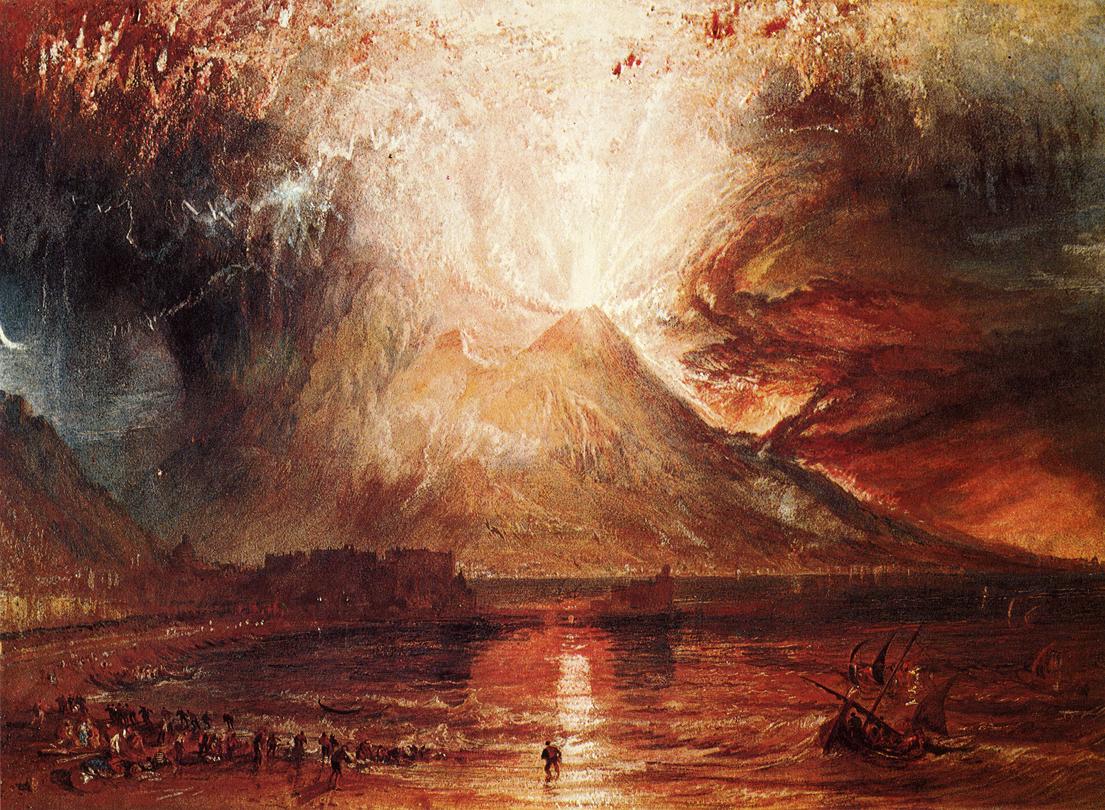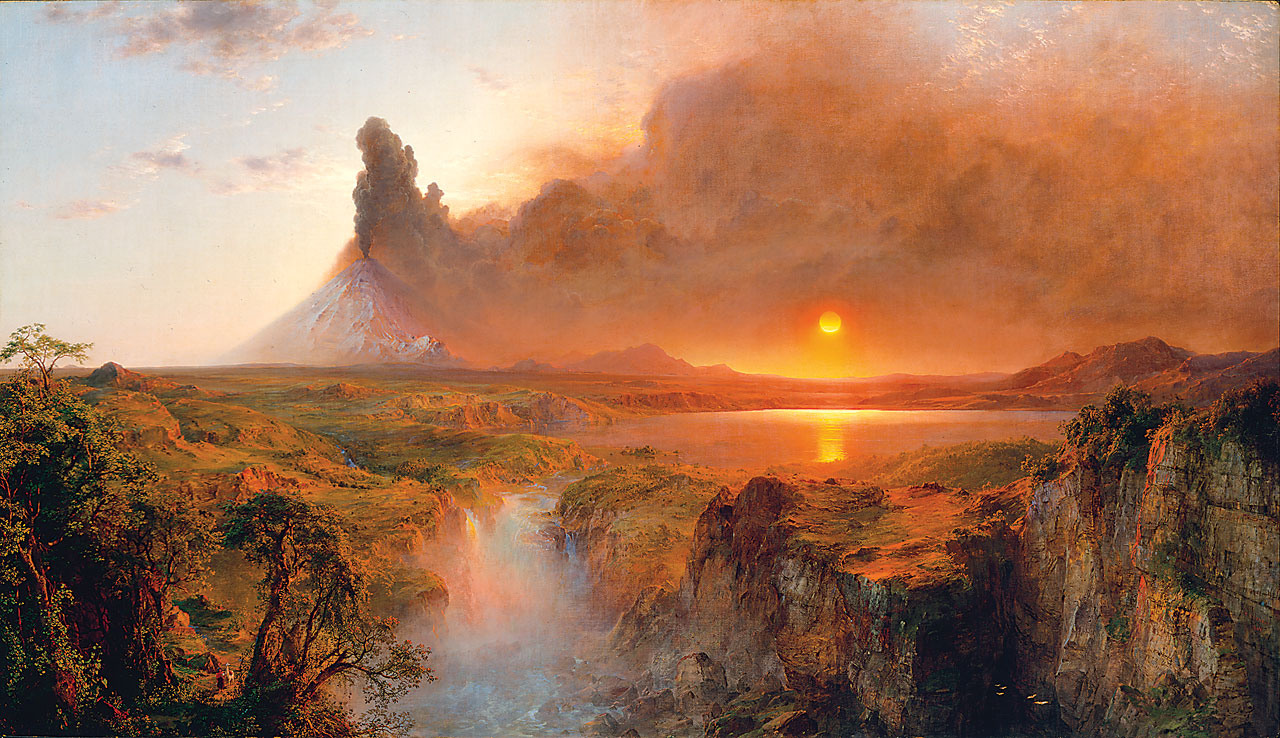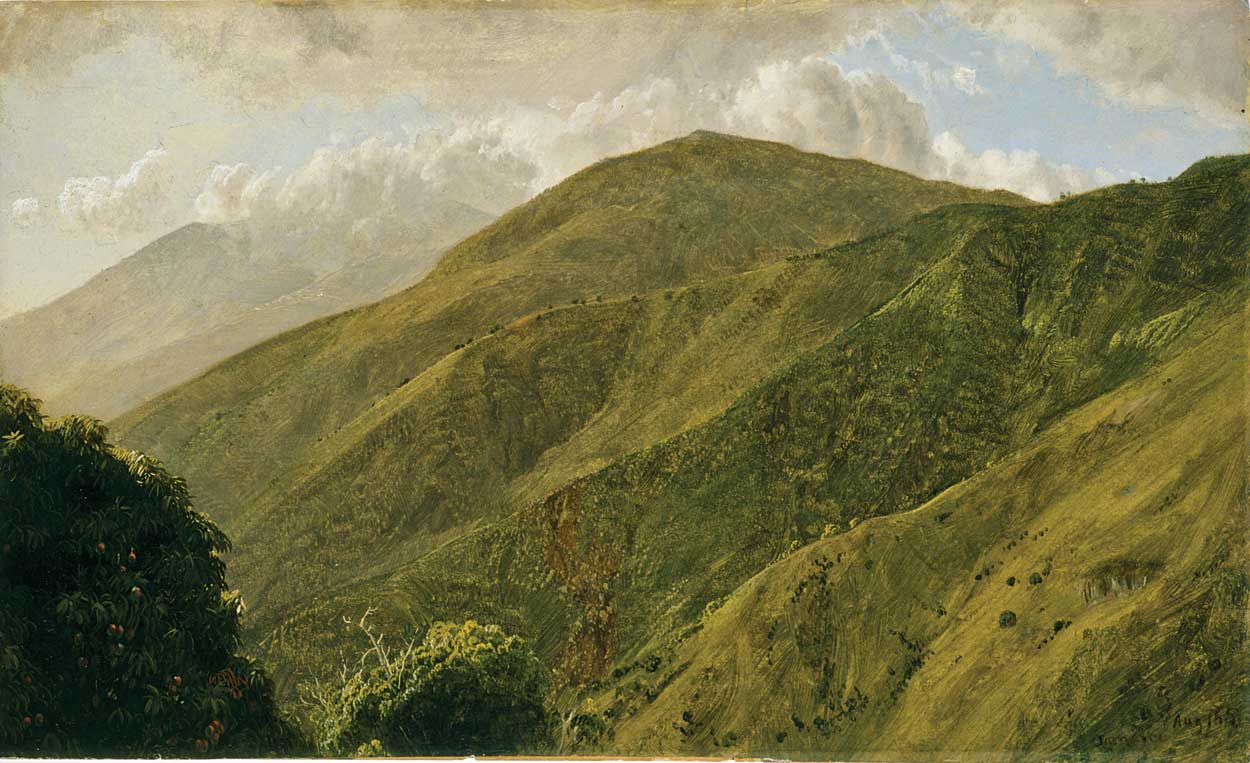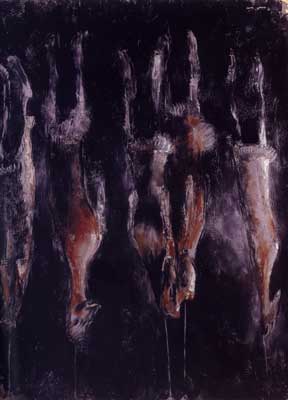History is punctuated with moments of chaos and beauty. Seemingly antitheses by nature, in aesthetics there are myriads examples of how these two manage to converge in single works and enter a pleasing balance. Amongst them there is Tintoretto, a consummate devotee of violence and drama, whose bewildering depictions of many biblical episodes redefine the meaning of “chaos” as a synonym to sheer “epicness” or “monumentality.” Rarely does his pictorial crowdedness amount to an unrelenting sense of knottiness; as fastidious as is his exactitude on the minutiae, Tintoretto never failed to see the forest for the trees. Every single brushstroke and colour he applied onto the paintings was sure to be conducive to an immediate effect of harmony and order.
In the early 19th century France entered Eugene Delacroix, an exponent of what would come to be known as French Romanticism. Most of Delacroix’s renowned works of large-scale historical scenes were considered a scourge to the genteel nouveau riche, whose aesthetic sensibility for decades had been informed by the surreally immaculate, luminous beauty of the Neoclassicist paintings. Delacroix’s stand a marked contrast to such obsessive pursuit of the implausible ideal. In keeping with the tradition of past masters, especially those of the High Renaissance, the French romanticist was unafraid of probing the underside of beauty- predominantly, the violence and the chaos, both of which are the mainstays of the making of history.
One of the keys of rendering the depictions of war scenes less of a clunky, tangled affair is to suffuse them with a feeling of rhythmic movement. As such the edge of intensity is rounded and the phenomenon of drama more readily registered. In Delacroix’s most famous, Liberty Leading the People, the rhythm can be distinctly felt in the goddess’s ruffled garb, the furled flag and the general inclination of the ensemble towards the right foreground. This is juxtaposed with the deathly stillness of the wounded figures, piling up beneath the feet of the advanced crowd. The fighters are putting up a stout defense regardless of the toll; their swiftness of movement is a sure sign of their optimism; from above their heads clouds are beginning the disperse; victory is imminent.
Delacroix also tackled eroticism. There is something dangerous in explicating sexual matters in a displayed work- every of its viewers is made an enforced voyeur of the carnal pleasure; art is reasonably capitalised as a vehicle for the forbidden fruits. It is hardly unprecedented, though, that high art should be the unlikely agent of bridging the chasm between the superior and the low- nudity, from time immemorial, has been generally regarded as an idyllic, innocuous element especially amongst the divinities. Yet an intentionally detailed depiction of an orgiastic bacchanal can easily put to test the society’s instinctually squeamish reception of sex in art.
Delacroix’s erotic paintings are a response, or a counter-response, to those that water down their graphic contents in pandering to the straitlaced public. The Death of Sardanapalus is based on a scene from the eponymous play of Lord Byron, a personal favourite of Delacroix, that tells of Sardanapalus, king of Assyria, ordering a massacre of his concubines when learned of his military defeat. The French romanticist is as ruthless as the notorious Greek king in conceiving in grisly details the great disorder and horror that accompany the bloody carnage. The use of bright colours is especially instrumental in spelling out the violence- those red divans look eerily as if smeared with the bloods of the youthful harlots. As its dominant feature a nude prostrates herself on the divan in supplication for the king’s mercy; her gesture offers an agonising sight of doldrums amidst the rippling chaos.
Charles Baudelaire aptly summarises Delacroix’s legacy as one who was “passionately in love with passion, but coldly determined to express passion as clearly as possible.” Delacroix’s unparalleled representations of historical events proved only a meteoric happening as, after his death, there were Manet and the Impressionists; serenity, though in a much different guise, would again hold sway as the dominant mood.




.jpg/640px-Leonardo_da_Vinci_Virgin_of_the_Rocks_(National_Gallery_London).jpg)





